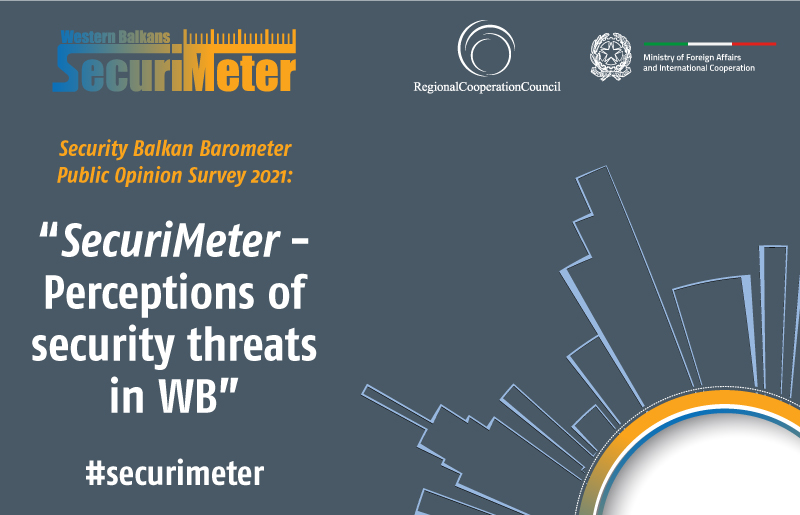- Home/
- News
Hidden Figures: The Untold Story of Terrorist Recruiters
The golden age of terrorism research has arrived.1
An area that was once both the hobby and obsession of fringe scholars now commands global attention and overdue credibility in the academic and scientific community. The events of 11 September 2001 mobilized a new generation of researchers, and consequently, efforts to understand violent extremism.2 Armed with new and comprehensive data sets covering both events3 and participants,4 today’s research showcases new ways to exploit increasingly high-quality data and evidence,5 harnessing innovative and rigorous research methods.6 The field is even seeing its first wave of replication studies emerge.7
One of the healthiest indicators of such progress is that researchers are offering new and exciting perspectives on age-old debates.8 9 Perhaps even more promising is evidence for quicker revision of assumptions. A notable example is a recent article in Studies in Conflict and Terrorism by Bart Schuurman and colleagues10 who argued for an end to the “lone wolf” label. The authors decry a fundamental “misdiagnosis,” concluding that the label is little more than a hasty short-term mischaracterization of attackers subsequently revealed to have ties to individuals and networks. Our recent work on this issue supports this viewpoint.11
We believe that the otherwise welcome rise in research on violent extremism has come at the expense of serious consideration of recruitment in terror networks. Terrorism research is overwhelmingly recruit-focused, largely ignoring the crucial contributions of recruiters in encouraging and mobilizing would-be terrorists. While we are not alone in highlighting this concern,12 13 14 we believe the time has come for a comprehensive investigation into the tactics, techniques, and procedures used by terrorist recruiters in finding, grooming, coaching, and selecting prospective recruits.
Central to this isn’t mere unease about the apparent ‘lone wolf’ misdiagnosis. We remain perplexed about the perennially challenging link between attitudes and behavior, or views and actions. On one level, radicalization refers to a process through which people acquire radical views. Those views might stem from aspirations to social, political, religious, or ideological change. Their ‘radical’ status might stem from little more than just being unpopular or deviating from the norm in some way. There is nothing inherently controversial or odd about acquiring strong views per se. Indeed, in many contexts, it is a normal, if not healthy, drive to want radical change amid, say, perceived social injustice, inequality, or persecution of a community.
In the context of violent extremism, or terrorism, radicalization implies something a little different. It implies the acquisition of views deemed problematic. The implicit assumption here is that by being exposed to or acquiring certain views, a person might be more likely to act in a way that is consistent with those views.
Over the past 15 years, the word ‘radicalization’ has become synonymous with terrorism, leading to no small amount of confusion. Explanations for involvement in terrorism often tautologically are couched in answers such as “because s/he was radicalized.” However, as has now been said many times, even within the terrorism context, the mere presence of radical beliefs does not translate to violent behavior. In fact, it very rarely does. Radicalization does not guarantee (or even imply) mobilization, and radical behavior doesn’t necessarily or always stem from radical beliefs.
We believe that a renewed focus on the role of terrorist recruiters may help bridge the gap between beliefs and behavior.
By recruiter, we do not mean spiritual leaders or ideologues whose roles involve legitimization and inspiration from afar. Instead, we propose a closer look at those in terror networks whose primary role is to showcase opportunities to people outside the movement and to influence their actions towards applying for and fulfilling specific roles, jobs, or tasks.15
Precisely what we call those hidden figures is itself unclear. They are portrayed in recent media and analyses as “recruiters,”16 “groomers,”17 “seducers,”18 or “coaches.”19
Their influence, however, is undeniable, not least in the very same cases of what were once considered among the dozens of ‘lone wolves.’20 21 22
Much of what we assume about terrorist recruitment is found in the pages of terrorist training manuals. Al Qaeda’s training manual, Military Studies in the Jihad Against the Tyrants, memorably describes 14 characteristics all aspirants ideally possess to prepare for membership. Terrorism analysts are divided over whether such content necessarily signals sophistication,23 but at the very least, it suggests that groups and their recruiters project value onto certain traits and qualities and that it wishes its pool of prospective recruits to be aware that a life of terrorism (though they would not refer to it as such) isn’t necessarily for everyone. That recruiters attempt to project ‘prestige’ and practicing some discrimination in their selection is notable24 and deserves more attention.
In addition to what limited recruiter-centric research exists from terrorism scholars,25 we can draw on knowledge derived in different areas such as Industrial and Organizational Psychology,26 27 military recruitment,28 and many other fields to inform our understanding.
We do not propose that studying the actions of recruiters is a panacea for addressing the ideas-action question, nor do we believe a recruiter hides behind every apparent ‘lone wolf.’ We do, however, consider a comprehensive, rigorous study of recruiters a partial and necessary solution to addressing the missing link in the turn to violent extremism.
[1] Silke, A. & Schmidt-Petersen, J. (2015). “The Golden Age? What the 100 Most Cited Articles in Terrorism Studies Tell Us,” Terrorism and Political Violence 29(4): 692-712. doi: 10.1080/09546553.2015.1064397.[2] Silke, A. (2006). “The Impact of 9/11 on Research on Terrorism,” In Ranstorp, M. (Ed.), Mapping Terrorism Research: State of the Art, Gaps and Future Direction. London, UK: Routledge.
[3] National Consortium for the Study of Terrorism and Responses to Terrorism. (2018). Global Terrorism Database. Retrieved from https://www.start.umd.edu/gtd.
[4] Program on Extremism. (2018). ISIS in America – The Cases. Retrieved from https://extremism.gwu.edu/cases.
[5] CREST. (2018). Actors and Narratives. Retrieved from https://crestresearch.ac.uk/projects/actors-and-narratives/.
[6] Corner, E. & Gill, P. (2019). “Psychological Distress, Terrorist Involvement and Disengagement from Terrorism: A Sequence Analysis Approach,” Journal of Quantitative Criminology. doi: 10.1007/s10940-019-09420-1.
[7] Phillips, B.J. (2017). “Do 90 Percent of Terrorist Groups Last Less than a Year? Updating the Conventional Wisdom,” Terrorism and Political Violence. doi: 10.1080/09546553.2017.1361411.
[8] Corner, E., & Gill, P. (2015). “A False Dichotomy? Mental Illness and Lone-Actor Terrorism,” Law and Human Behavior, 39(1), 23-34. http://dx.doi.org/10.1037/lhb0000102.
[9] Merari, A. (2010). Driven to Death: Psychological and Social Aspects of Suicide Terrorism. New York: Oxford University Press.
[10] Schuurman, B., Lindekilde, L., Malthaner, S., O’Connor, F., Gill, P., & Bouhana, N. (2019). “End of the Lone Wolf: The Typology that Should Not Have Been,” Studies in Conflict & Terrorism, 42(8): 771-778. doi:: 10.1080/1057610X.2017.1419554.
[11] Horgan, J. & Papatheodorou, K. (In press). “’Coaches,’ ‘Groomers,’ ‘Handlers,’ & ‘Seducers:’ How Terrorist Recruiters Seek the Right Stuff, for the Wrong Reasons,” In Stohl, D. (Ed.), Trends in Contemporary Terrorism. Routledge.
[12] Hunter, S.T., Shortland, N.D., Crayne, M.P., & Scott-Ligon, G. (2017). “Recruitment and Selection in Violent Extremist Organizations: Exploring What Industrial and Organizational Psychology Might Contribute,” American Psychologist 72(3), 242–254. https://doi.org/10.1037/amp0000089.
[13] Windisch, S., Logan, M.K., & Scott-Ligon, G. (2018). “Headhunting Among Extremist Organizations: An Empirical Assessment of Talent Spotting,” Perspectives on Terrorism, 12(2), 44-62.
[14] Taarnby, M. (2005). Recruitment of Islamist Terrorists in Europe. Trends and Perspectives. Research Report funded by the Danish Ministry of Justice, Centre for Cultural Research, University of Aarhus.
[15] Breaugh, J.A. (2008). “Employee Recruitment: Current Knowledge and Important Areas for Future Research,” Human Resource Management Review 18(3), 103-118. https://doi.org/10.1016/j.hrmr.2008.07.003.
[16] Hegghammer, T. (2013). “The Recruiter’s Dilemma: Signalling and Rebel Recruitment Tactics,” Journal of Peace Research, 50(1): 3–16. doi:10.1177/0022343312452287.
[17] Lennings, C.J., Amon, K.L., Brummert, H., & Lennings, N.J. (2010). “Grooming for Terror: The Internet and Young People,” Psychiatry, Psychology and Law, 17(3), 424-437.
[18] Wood, G. (2016). The Way of the Strangers. NY: Random House.
[19] Callimachi, R. (2017, February 4). “Not ‘Lone Wolves’ After All: How ISIS Guides World’s Terror Plots from Afar,” The New York Times. Retrieved from https://www.nytimes.com/2017/02/04/world/asia/isis-messaging-app-terror-plot.html.
[20] Horgan, J. & Papatheodorou, K. (In press). “’Coaches,’ ‘Groomers,’ ‘Handlers,’ & ‘Seducers:’ How Terrorist Recruiters Seek the Right Stuff, for the Wrong Reasons,” In Stohl, D. (Ed.), Trends in Contemporary Terrorism. Routledge.
[21] Steinback, M. (2016). “How Technology Has Transformed the Terrorist Threat Fifteen Years After 9/11,” The Washington Institute. Retrieved from https://www.washingtoninstitute.org/policy-analysis/view/how-technology-has-transformed-the-terrorist-threat-fifteen-years-after-9-1.
[22] Intelligence and Security Committee of Parliament. 2017. “UK Lethal Drone Strikes in Syria.” http://www.statewatch.org/news/2017/may/uk-isc-lethal-drone-strikes-in-syria-report-4-17.pdf.
[23] Warius, A. & Fishman, B. (2009). “A Jihadist’s Course in the Art of Recruitment,” CTC Sentinel 2(2). https://ctc.usma.edu/a-jihadists-course-in-the-art-of-recruitment/.
[24] Hegghammer, T. (2013). “The Recruiter’s Dilemma: Signalling and Rebel Recruitment Tactics,” Journal of Peace Research, 50(1): 3–16. doi:10.1177/0022343312452287.
[25] Hegghammer, T. (2013). “The Recruiter’s Dilemma: Signalling and Rebel Recruitment Tactics,” Journal of Peace Research, 50(1): 3–16. doi:10.1177/0022343312452287.
[26] Hunter, S.T., Shortland, N.D., Crayne, M.P., & Scott-Ligon, G. (2017). “Recruitment and Selection in Violent Extremist Organizations: Exploring What Industrial and Organizational Psychology Might Contribute,” American Psychologist 72(3), 242–254. https://doi.org/10.1037/amp0000089.
[27] Windisch, S., Logan, M.K., & Scott-Ligon, G. (2018). “Headhunting Among Extremist Organizations: An Empirical Assessment of Talent Spotting,” Perspectives on Terrorism, 12(2), 44-62.
[28] Lovering, M.E., Heaton, K.J., Banderet, L.E., Neises, K., James, A. & Cohen, B.S. (2017). “Psychological and Physical Characteristics of U.S. Marine Recruits,” Military Psychology, 27(5), 261-275. doi: 10.1037/mil0000082.



 Development of specialized PCVE web site is funded by EU FUNDS CN 2017-386/831 - "IPA II 2016 Regional Action on P/CVE in the Western Balkans"
Development of specialized PCVE web site is funded by EU FUNDS CN 2017-386/831 - "IPA II 2016 Regional Action on P/CVE in the Western Balkans"